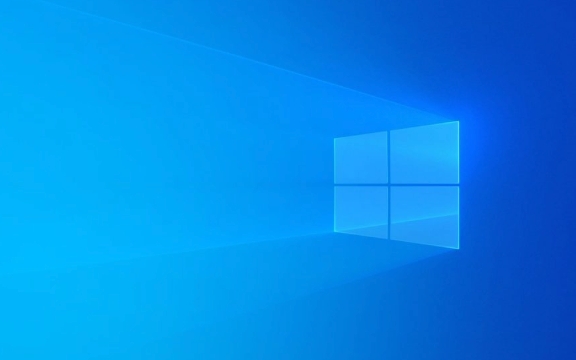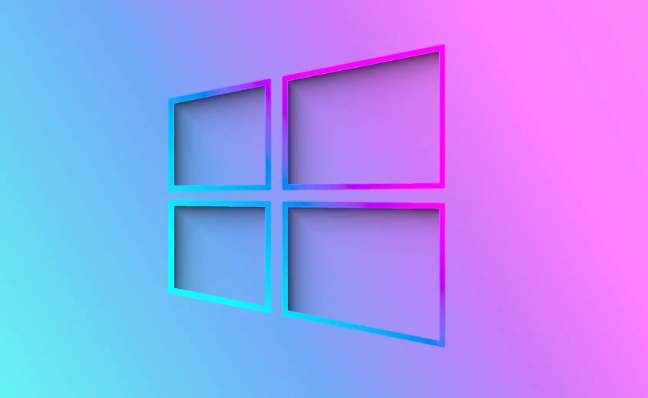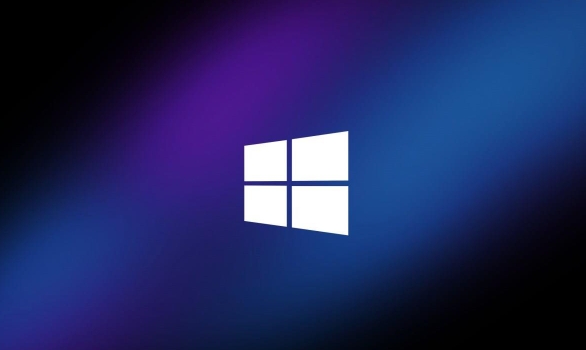 System Tutorial
System Tutorial
 Windows Series
Windows Series
 How to fix 'File History doesn't recognize this drive' in Windows?
How to fix 'File History doesn't recognize this drive' in Windows?
How to fix 'File History doesn't recognize this drive' in Windows?
Jul 09, 2025 am 01:11 AMThe error "File History doesn't recognize this drive" in Windows typically indicates that File History cannot use the selected drive for backups due to issues such as incorrect formatting, leftover data from previous backups, or permission problems.

When you see the error "File History doesn't recognize this drive" in Windows, it usually means that File History can’t use the selected drive to back up your files. This issue often comes down to a few common causes—like formatting problems, leftover data from previous backups, or permission issues.

Let’s go over how to fix it step by step.
1. Format the Drive Using NTFS (or ReFS)
File History requires the drive to be formatted with either NTFS or ReFS file system. If it's using FAT32 or exFAT, Windows won’t accept it.

- Plug in the drive
- Open This PC, right-click the drive, and select Format
- In the drop-down menu under “File system,” choose NTFS
- Click Start and wait for the process to finish
?? Formatting will erase all data on the drive, so make sure to back up anything important first.
If you're using an external hard drive or SSD, NTFS is the safest bet. For large storage pools or NAS devices, ReFS might be an option, but most users should stick with NTFS.

2. Clear Out Old File History Data
If the drive was used before for File History backups and something went wrong—or if you reformatted it—Windows might still have old metadata stored.
To reset it:
- Go to Settings > System > Storage
- Scroll down and click Advanced storage settings > Disks & volumes
- Select the affected drive and click Properties
- Under the General tab, click Delete backup data
- Confirm when prompted
Alternatively, you can also try using Disk Management or DiskPart to clean the disk completely (this is more advanced and should be done carefully).
3. Check File History Settings and Permissions
Sometimes the drive itself is fine, but Windows isn’t allowing File History to access it properly.
Try these steps:
- Go to Control Panel > File History
- If it shows the drive as unavailable, click Select Drive on the left
- Remove the current drive if listed
- Let Windows rescan connected drives and pick the same one again
Also check permissions:
- Right-click the drive in File Explorer and go to Properties
- Go to the Security tab
- Make sure your user account has full control
If not, click Edit, select your account, check Full control, and apply changes.
4. Use a Different USB Port or Cable
This may sound minor, but sometimes connection issues cause Windows to misidentify or fail to fully recognize a drive.
Try:
- Plugging the drive into a different USB port
- Using a different cable (especially for external SSDs or NAS)
- Avoiding USB hubs—connect directly to the computer if possible
A loose or faulty connection can cause intermittent recognition issues, which might confuse File History even after everything else looks correct.
That’s basically how to resolve the "File History doesn't recognize this drive" error. Most of the time, reformatting the drive correctly or clearing out old backup data fixes it. Connectivity and permission issues are less common but worth checking if the main fixes don’t work.
The above is the detailed content of How to fix 'File History doesn't recognize this drive' in Windows?. For more information, please follow other related articles on the PHP Chinese website!

Hot AI Tools

Undress AI Tool
Undress images for free

Undresser.AI Undress
AI-powered app for creating realistic nude photos

AI Clothes Remover
Online AI tool for removing clothes from photos.

Clothoff.io
AI clothes remover

Video Face Swap
Swap faces in any video effortlessly with our completely free AI face swap tool!

Hot Article

Hot Tools

Notepad++7.3.1
Easy-to-use and free code editor

SublimeText3 Chinese version
Chinese version, very easy to use

Zend Studio 13.0.1
Powerful PHP integrated development environment

Dreamweaver CS6
Visual web development tools

SublimeText3 Mac version
God-level code editing software (SublimeText3)

Hot Topics
 I Refuse to Go Wireless With These 7 Gadgets
Jun 12, 2025 pm 12:09 PM
I Refuse to Go Wireless With These 7 Gadgets
Jun 12, 2025 pm 12:09 PM
Fully wireless speakers, like the Anker Soundcore 2, can be a reasonable choice to pair with phones and laptops. They can usually draw power via USB, which allows them to be used wired. However, their limited power output also means that they don't g
 7 Open-Source Windows Apps I Can't Live Without
Jun 11, 2025 am 03:07 AM
7 Open-Source Windows Apps I Can't Live Without
Jun 11, 2025 am 03:07 AM
It also fully integrates with the right-click context menu on Windows 11, so you can carry out basic tasks—such as adding a file to an archive or extracting the contents of a ZIP file—without needing to open the application itself.NanaZip also provid
 I'll Never Go Back to the Wired Versions of These 7 Gadgets
Jun 12, 2025 pm 03:02 PM
I'll Never Go Back to the Wired Versions of These 7 Gadgets
Jun 12, 2025 pm 03:02 PM
In many ways, it doesn’t make sense for me to use wireless keyboards with my stationary PC. Not only do my keyboards never move, but I tend to keep the 2.4 GHz receiver sitting on my desk via a dongle attached to a cable. Further, my keyboard needs r
 How to Install Microsoft Edit on Windows 11
Jun 11, 2025 am 03:05 AM
How to Install Microsoft Edit on Windows 11
Jun 11, 2025 am 03:05 AM
The New Microsoft Edit Is Superb There isn’t much to say about Microsoft Edit, and that’s a great thing. It has quickly become my preferred tool for quick text editing thanks to its straightforward nature.A Minimal InterfaceThe interface is as simpl
 How to Use Windows Reliability Monitor
Jun 11, 2025 am 03:04 AM
How to Use Windows Reliability Monitor
Jun 11, 2025 am 03:04 AM
Opening Reliability Monitor on Windows 11 Microsoft has buried this useful utility a few clicks deep, but it's simple to reach if you know the steps. The simplest way to access the Reliability Monitor is through the Start menu search bar.Start Menu S
 JLab Flow Mouse & Keyboard Bundle Review: The Best Budget-Friendly Bundle
Jun 10, 2025 am 09:28 AM
JLab Flow Mouse & Keyboard Bundle Review: The Best Budget-Friendly Bundle
Jun 10, 2025 am 09:28 AM
The JLab Flow Mouse & Keyboard Bundle is a fantastic, budget-friendly mouse and keyboard combo. It’s not the most advanced setup in the world, nor the quietest, but I admittedly had a hard time going back to my daily drive PC accessories when I f
 Microsoft's Answer to SteamOS Should Be a Game-Changer for PC Gaming
Jun 12, 2025 pm 12:15 PM
Microsoft's Answer to SteamOS Should Be a Game-Changer for PC Gaming
Jun 12, 2025 pm 12:15 PM
PC gamers have been dealing with these issues for decades now, as Windows has been and remains the default operating system for PC gamers. However, thanks to Valve and SteamOS, as well as other gaming-centric Linux distributions like Bazzite, Microso
 Windows 11 Now Has a New Start Menu Design
Jun 12, 2025 pm 12:05 PM
Windows 11 Now Has a New Start Menu Design
Jun 12, 2025 pm 12:05 PM
Microsoft has made changes to almost every part of Windows 11 since its initial launch in 2021, but the taskbar and Start menu have remained largely untouched—until now. A fresh Start menu design is on the horizon, and it might be one you prefer.This





